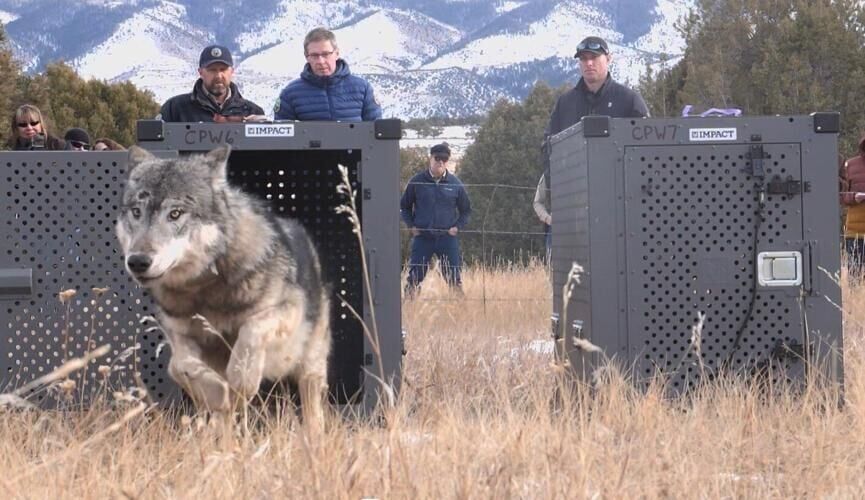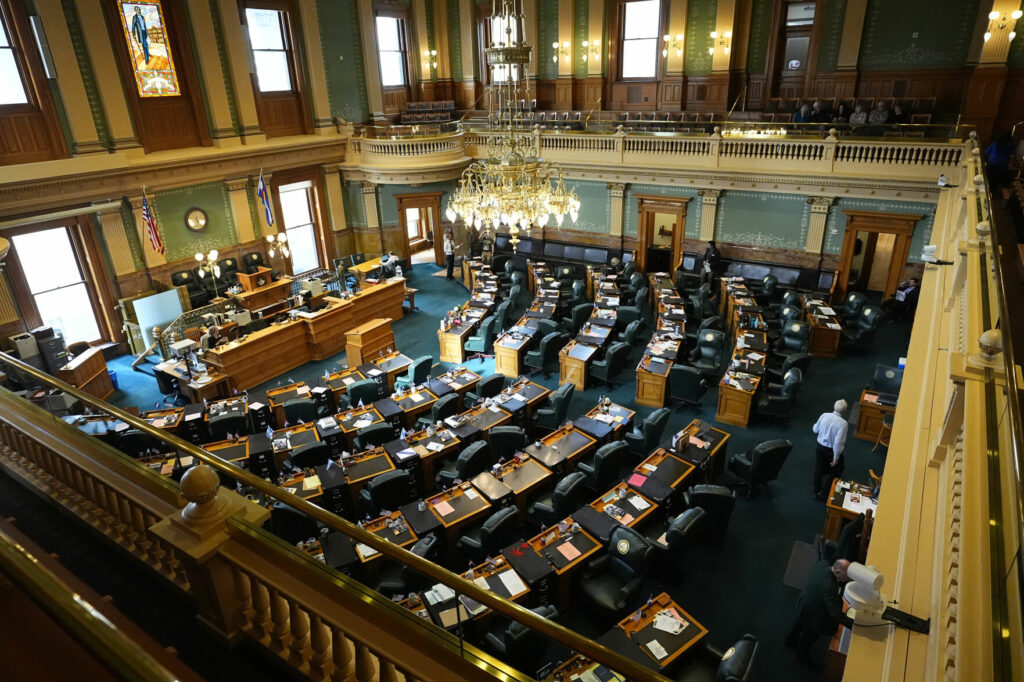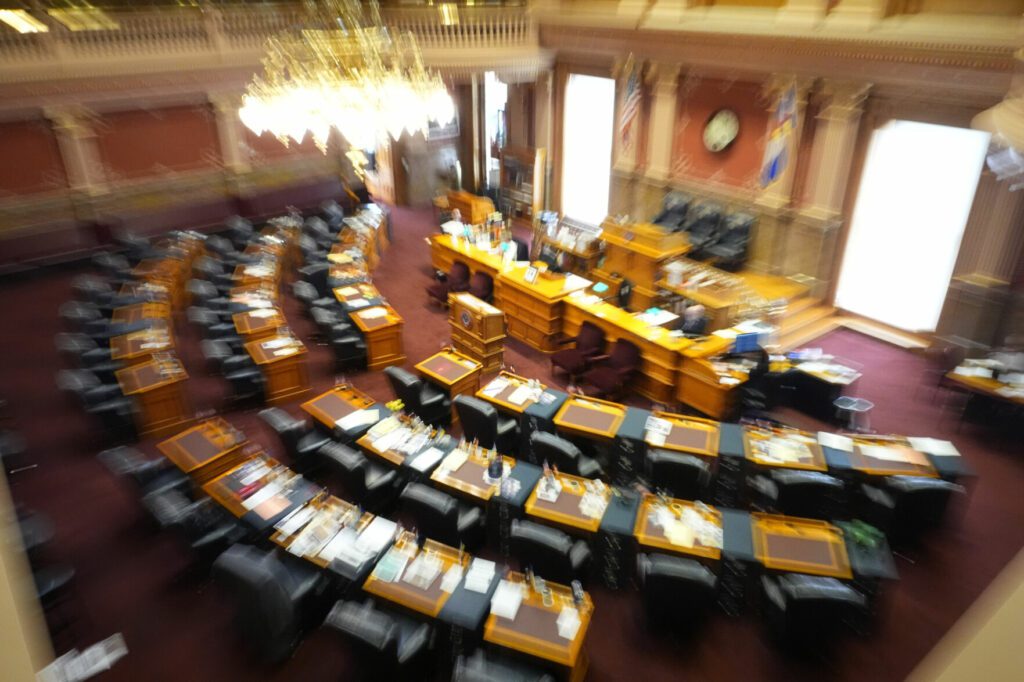El Paso County begins discussions over possible $2 billion boost to power grid infrastructure
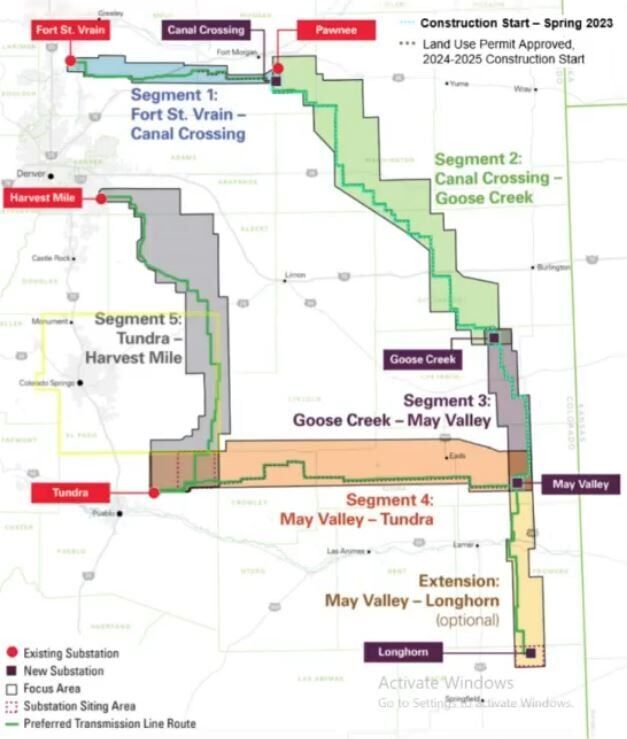
The El Paso County Board of Commissioners on Tuesday heard introductory plans for a portion of the statewide Colorado Power Pathway project, a nearly $2 billion stretch of transmission lines meant to bolster the reliability of the state’s power grid, that could cut through the plains east of Colorado Springs.
During a work session following the commission’s regular meeting, held in Calhan as part of its “On the Road” series of meetings planned throughout the county, utilities company Xcel Energy presented the proposed $1.7 billion-$2 billion, 345-kilovolt transmission system that will move high-voltage power in a loop stretching from Weld County to Cheyenne County.
Veteran-owned IT startup considering spending over $2 million to expand in Colorado Springs
The project would ultimately feature 550 total miles of electrical lines and poles divided into five segments, 41 miles of which could run through El Paso County, that would more effectively “connect eastern Colorado to the Front Range,” and make way for future wind and solar power plants, according to the company’s website.
“This is a project that is needed to (boost) the reliability of the bulk electric system in the state,” said Xcel Energy Project Director Heather Brickey. “It will … allow for renewable (energy) development in the eastern and south part of the state, and move electricity around the state safely.”
Segment 1, stretching from Weld to Morgan counties, is expected to begin construction in 2024, while Segments 2 and 3, running along the Kansas border, are set to begin construction this spring to begin service in 2026.
Segment 5 would run through the far eastern border of El Paso County to connect substations in Pueblo and Arapahoe counties, said Jennifer Chester, Xcel Energy siting and land rights manager.
When asked by Commissioner Longinos Gonzalez why the project did not propose to use preexisting transmission line infrastructure along the Interstate 25 corridor, Chester said there is not enough space for the 150-foot right of way required under the new Colorado Power Pathway lines due to dense home and business development. In the central plains of the county, U.S. Air Force Academy training areas, lands set aside for “biological and cultural” preservation, existing wind turbines and other structures also led Xcel Energy to propose a “preferred” route in the far Eastern Plains, she said.
“While some portions of (the I-25 corridor) may have enough space, we very quickly get to dense development – whether that’s homes, businesses or other things – and start doing this weaving pattern where we are wrapping communities, wrapping homes, wrapping businesses with that transmission,” Chester said.
Construction on Segments 5 and 4, which also reaches slightly into the county, would begin in 2025 on being granted a “1041 permit,” which gives the county Planning and Community Development Department some control over approving large-scale projects traditionally considered to be of statewide interest.
According to county spokesman Scott Anderson, Xcel Energy has not provided a date that it intends to submit an application, though there is “no timeline requirement” for the company to do so.
“They will be required to have an early assistance meeting with us first, and that has not even been requested or scheduled yet,” Anderson said in an email to The Gazette.
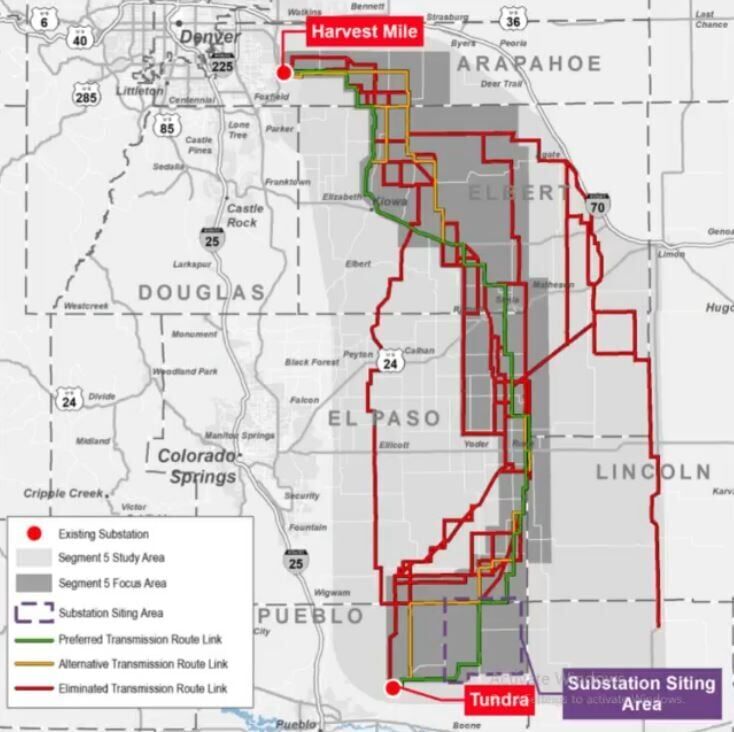
Amanda Ewing, a senior right-of-way agent with Xcel Energy, addressed Commissioner Carrie Geitner’s concern over how the project would affect rural landowners – what Ewing called the “elephant in the room – and said that of the 48 landowners whose properties would be crossed by the project, 50% have granted Xcel Energy right of entry to conduct land and biological studies, and 22% have signed an option agreement for the easement under each power line.
Only four landowners have not returned contact efforts, she said.
“We see that as a sign that landowners are engaging with us and that they’re letting us come onto their property to start surveying for the project,” Ewing said.
“Given we’ve just started (contacting landowners) two months ago, more significant progress has occurred in El Paso County, on the negotiation front, compared to all of the other segments so far,” she added.
Expansion adding over 750 homes in north El Paso County approved, some residents concerned
Ewing said that while the company does have the right to acquire land rights for transmission development though eminent domain hearings, such a move is the “last option in the toolbox” and that 2% of conflicts result in starting the condemnation process. Of those few instances, just half of those result in taking a landowner to a civil hearing, Ewing said.
Deb Fletcher, who lives on a farm between Rush and Boone, said in a public comment that she is “completely against” the project and that she would like to see a utility tax and franchise fee tax imposed to help fund rural roads, schools and volunteer fire departments, or that refunded TABOR funds go only to affected residents in unincorporated El Paso County.
“I’d just love to see the citizens of Denver that benefit from this pay a tax … to those of us out here having to deal with the structure that they get to benefit from,” Fletcher said.
If approved, Segments 4 and 5 are expected to go into service by 2027.
Colorado Springs plans to issue $40 million in bonds for over 200 new affordable rental units





